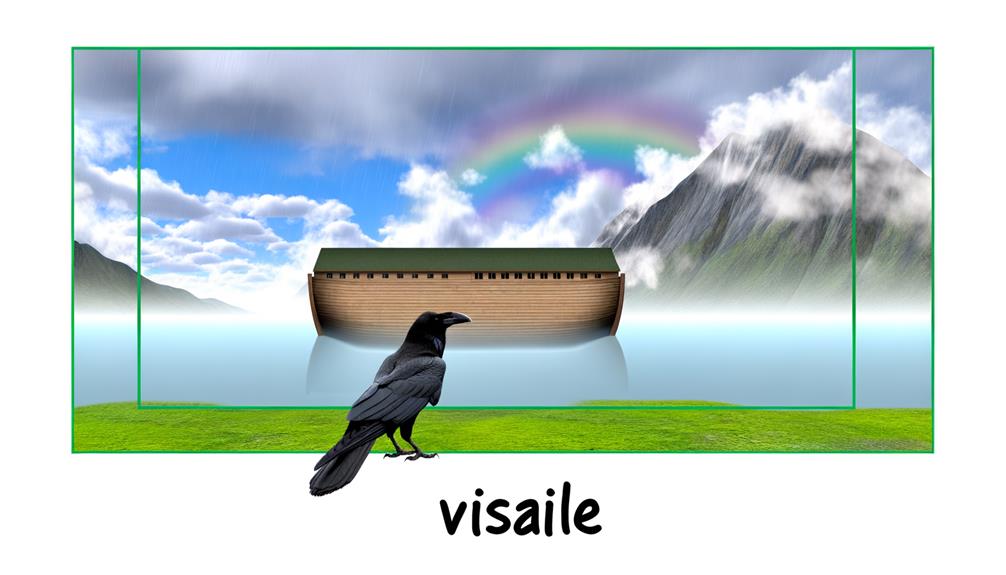Birds Of The Air Bible Meaning: Trust and Provision
In the Bible, ‘birds of the air‘ encompass profound symbolic meanings that highlight divine messages, spiritual truths, and God’s providential care. Birds appear throughout scripture from Genesis to the New Covenant, often symbolizing freedom, divine omnipresence, and spiritual insight.
In Genesis, they reflect God’s creativity and order in creation (Gen. 1:20-22).
Sparrows in Jesus’ teachings illustrate God’s meticulous care for all creatures, emphasizing each person’s value (Matt. 10:29-31).
Birds also serve as symbols of divine judgment and peace, as seen with the raven and dove in Noah’s story. Exploring these references further provides deeper theological insights.

Birds of the Air Meaning in the Bible: Symbolism of Freedom, Providence, and Spiritual Insight
| Biblical Reference | Birds Mentioned | Context | Spiritual Meaning |
|---|---|---|---|
| Matthew 6:26 | Birds of the air | God provides for them without sowing or reaping | Trust in God’s provision and care |
| Luke 12:24 | Ravens | God feeds them, yet they do not labor | Assurance of divine sustenance |
| Genesis 8:8-12 | Dove and Raven | Noah releases birds after the flood | Hope, peace, and new beginnings |
| Matthew 13:4, 19 | Birds devour seeds | Birds represent the evil one snatching the Word | Spiritual opposition and vulnerability to distraction |
| Revelation 19:17-18 | All birds | Feast on kings and mighty men | Symbol of divine judgment and victory over evil |
Biblical Symbolism of Birds

In the Bible, birds are often imbued with profound symbolic significance, representing various spiritual truths and divine messages as evidenced in numerous scriptural references.
For instance, in Isaiah 40:31, eagles symbolize strength and renewal, as those who hope in the Lord will ‘soar on wings like eagles.’ Similarly, the dove, as seen in Matthew 3:16, represents the Holy Spirit descending upon Jesus during His baptism.
Historical context further enriches these symbols; ancient cultures often viewed birds as messengers between the heavens and the earth. Theologians interpret such imagery to convey God’s providence, presence, and peace.
Consequently, biblical birds are not mere creatures but rich symbols embedded with theological and spiritual meaning, offering deeper insights into divine narratives.
Birds in Genesis

Genesis introduces birds as integral parts of God’s creation narrative, highlighting their role in the divine order established during the creation week.
In Genesis 1:20-22, God commands the waters to teem with living creatures and the sky to be filled with birds, blessing them to be fruitful and multiply. These verses underscore the importance of avian life as a manifestation of divine creativity and providence.
The creation of birds alongside other creatures on the fifth day symbolizes the completion of God’s work in filling the heavens and earth.
Historically, this account reflects an ancient understanding of the natural world, where birds, with their ability to traverse the skies, represent freedom and the omnipresence of God’s spirit.
The Raven and Noah

The narrative in Genesis continues to highlight the significance of birds through the story of Noah, particularly with the release of the raven as a symbol of judgment and hope.
In Genesis 8:7, Noah sends out a raven to see if the waters had receded, yet it did not return, suggesting the persistence of judgment upon the earth. Historically, ravens were seen as unclean animals (Leviticus 11:15), reinforcing the themes of sin and purification.
Despite its negative connotations, the raven’s ability to survive the devastation also symbolizes resilience and the potential for renewal. This dual symbol underscores the complexity of divine judgment intertwined with the hope for restoration, inviting deeper reflection on God’s providence and mercy.
Birds in Psalms

Throughout the Psalms, birds frequently appear as symbols of God’s care, protection, and the soul’s longing for divine presence. In Psalm 84:3, the sparrow finds a home, and the swallow a nest near God’s altar, illustrating divine provision. Historical Jewish context often saw birds as messengers or beings close to the divine.
Psalm 91:4 metaphorically describes God covering His faithful ‘with His feathers,’ offering refuge like an eagle shelters its young. These images serve to reassure believers of God’s omnipresent care and intimate involvement in their lives.
Additionally, the longing for God’s courts in Psalm 84 reflects a soul’s deep desire for communion with the divine, using the bird’s nesting as a powerful metaphor for spiritual rest and security.
Jesus and the Sparrows

In the teachings of Jesus, sparrows become a profound symbol of God’s providential care, as seen in Matthew 10:29-31, where He emphasizes that not a single sparrow falls to the ground outside the Father’s will.
This imagery encourages believers to trust in God’s meticulous attention to their needs, transcending worries about material concerns.
Historically, sparrows were sold cheaply in marketplaces, yet Jesus highlights their value to underscore the inherent worth of every individual in God’s eyes.
Divine Care Illustrated
Jesus’ reference to sparrows in Matthew 10:29-31 serves as a profound illustration of divine care, emphasizing God’s meticulous attention to even the smallest creatures.
In this passage, Jesus highlights that not a single sparrow falls to the ground outside the Father’s will, affirming God’s omnipresence and compassion.
Historically, sparrows were of negligible economic value, often sold for a mere farthing. Yet, their mention underscores the intrinsic worth bestowed upon all creation by the Creator.
This theological insight reflects the broader biblical narrative of God’s providence and intimate involvement in the details of life.
Trust Over Worry
Drawing from the imagery of sparrows, the teachings in Matthew 6:25-26 powerfully advocate for placing trust in divine provision over succumbing to anxiety. Jesus elucidates that if God cares for the birds, then His care for humanity, created in His image, is assuredly greater.
This comparison, rich in theological insight, invites believers to relinquish worry, trusting instead in God’s omnipotent care. Historically, sparrows were perceived as insignificant, yet Jesus elevates their role to illustrate God’s attentive nature.
| Verse | Imagery | Lesson |
|---|---|---|
| Matthew 6:25 | Birds of the air | Trust over worry |
| Matthew 6:26 | Sparrows | Divine provision |
| Historical Context | Sparrows’ insignificance | God’s attentive care |
| Theological Insight | God’s omnipotence | Reassurance of human value |
This scriptural passage encourages a faith-centered approach to life’s uncertainties.
Value of Sparrows
How does Jesus’ reference to sparrows in Matthew 10:29-31 illuminate the intrinsic value bestowed upon all of God’s creation, urging believers to recognize their worth in the eyes of the divine?
In this passage, Jesus points out that sparrows, sold for a mere penny, are not forgotten by God. This highlights the profound care and attention God extends even to the smallest of creatures.
Historically, sparrows were considered insignificant, yet Jesus uses them to illustrate God’s all-encompassing providence. By affirming that believers are ‘worth more than many sparrows,’ Jesus reassures them of their immense value to God.
This theological insight underscores the divine love and care that envelops every individual, encouraging trust and confidence in God’s unfailing attention.
Prophetic Bird References

Prophetic references to birds in the Bible often serve as symbolic divine messages, such as the ravens that fed Elijah during a time of drought (1 Kings 17:4-6).
These avian figures can also function as omens and warnings, exemplified by the birds of prey that Abraham drove away from his sacrificial offerings, indicating future conflicts (Genesis 15:11).
Additionally, birds frequently appear as signs of spiritual insight, as in the vision of the Holy Spirit descending like a dove at Jesus’ baptism (Matthew 3:16), offering profound theological implications.
Symbolic Divine Messages
Throughout the Bible, birds frequently serve as symbolic divine messengers, carrying prophetic significance that underscores God’s communication with humanity.
For instance, the dove in Genesis 8:11 brings an olive leaf to Noah, signifying the end of the flood and the restoration of peace. Similarly, in 1 Kings 17:4-6, ravens provide sustenance to Elijah, symbolizing God’s provision during times of need.
Theologically, these avian symbols reflect God’s omnipresence and His active participation in the lives of His followers.
Historically, birds were often seen as intermediaries between the earthly and the divine, embodying messages that transcend human understanding.
Such scriptural references offer profound insights into how divine will and providence are revealed through nature’s creatures.
Omens and Warnings
In addition to their role as divine messengers, birds in the Bible also serve as harbingers of omens and warnings, illustrating how God’s forewarnings are communicated through nature.
For instance, in Jeremiah 12:9, the prophet speaks of a “speckled bird” surrounded by other birds, symbolizing nations conspiring against Israel. Similarly, in Isaiah 34:11, the presence of birds like the owl and raven in desolate lands signifies divine judgment.
Historical context shows that ancient cultures perceived birds as portents, and the Bible reflects this belief, using avian imagery to convey impending calamities.
These references underscore the theological concept that God’s creation is imbued with signs and signals, guiding humanity towards repentance and vigilance.
Spiritual Insight Signs
Birds in the Bible frequently serve as symbols of spiritual insight, offering profound prophetic references that reveal God’s will and divine mysteries.
For instance, the dove’s descent upon Jesus during His baptism (Matthew 3:16) signifies the Holy Spirit’s presence and approval. Similarly, the raven, which Elijah relied upon for sustenance (1 Kings 17:4-6), illustrates divine provision and faith.
In historical context, these avian symbols were well-understood by ancient audiences, who recognized birds as messengers of divine revelation. Isaiah 40:31 metaphorically equates those who hope in the Lord to eagles, soaring above earthly struggles, signifying renewal and strength.
Consequently, birds are not mere creatures but essential conveyors of spiritual truths, bridging the human and the divine.
Lessons From the Birds

Scripture often uses birds as symbols to convey divine lessons, illustrating themes of providence, spiritual insight, and moral guidance.
In Matthew 6:26, Jesus urges His followers to ‘look at the birds of the air,’ emphasizing God’s provision for even the smallest creatures, thereby encouraging trust in divine care.
Isaiah 40:31 speaks of those who hope in the Lord renewing their strength, likening them to eagles soaring. Historically, birds like the dove in Genesis 8:11 symbolize peace and divine promise.
These scriptural references provide profound lessons: trusting in God’s provision, seeking spiritual renewal, and embracing divine peace.
Birds serve as tangible reminders of God’s omnipresence and faithfulness throughout biblical history and human experience.
Conclusion
The confluence of avian symbolism throughout Biblical scripture underscores the thematic significance of birds in conveying divine messages.
From the raven in Genesis to the sparrows in the Gospels, birds serve as instruments of God’s providence and prophetic revelation.
Psalms celebrate their freedom and beauty, while prophetic texts employ them as harbingers of divine will.
This pervasive motif invites contemplation on the interconnectedness of creation and the spiritual lessons woven into the fabric of Biblical narratives.






